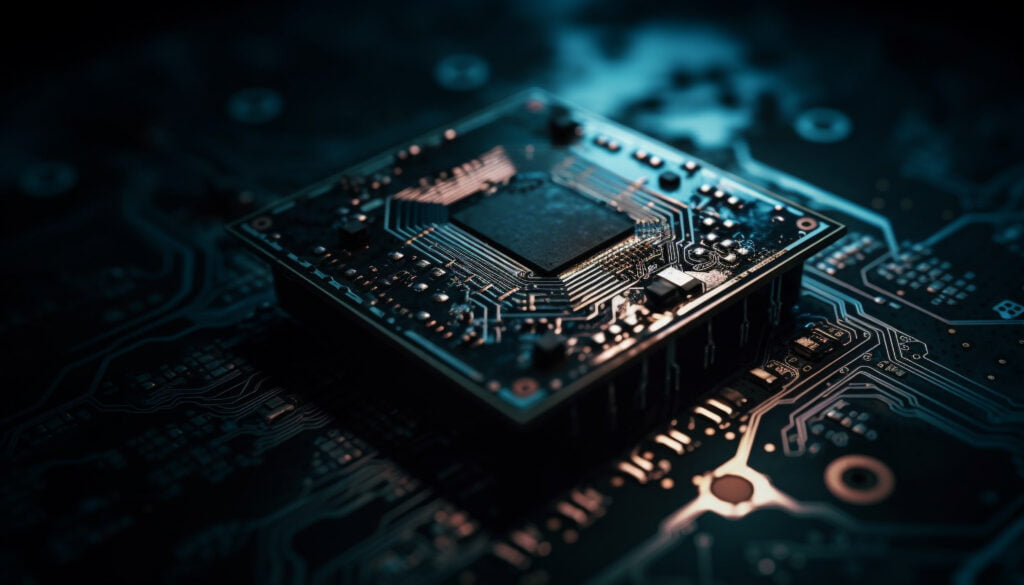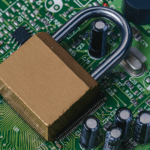Field-Programmable Gate Arrays (FPGAs) are a type of integrated circuit that provides programmable logic functionality, allowing users to configure and customize their digital circuits.
Unlike Application-Specific Integrated Circuits (ASICs) which are designed for specific applications, FPGAs offer flexibility and reconfigurability, enabling multiple programming iterations to meet different requirements.
FPGAs consist of configurable logic blocks (CLBs), programmable interconnects, embedded memory elements, clock management units, and various other components that facilitate the implementation of complex digital systems.
These devices excel at high-speed data processing, parallel computing, and real-time tasks due to their ability to perform multiple operations simultaneously.
In the following sections, we will delve into the underlying technology of FPGAs, explore their development process, discuss the current market trends, examine advanced FPGA technologies and architectures, explore the FPGA ecosystem and tools, address challenges faced by FPGA designers, and provide insights into the future of FPGA technology and its market.
I. Basic Architecture and Components
Configurable logic blocks (CLBs) are the building blocks of FPGAs, and they are coupled via programmable interconnects in a matrix.
Lookup tables (LUTs) that can implement logic operations, flip-flops for data storage, and multiplexers for signal routing are commonly found in each CLB.
Signals between CLBs and I/O interfaces can be routed thanks to the interconnects.
II. Configurable Logic Blocks (CLBs)
The core components of an FPGA are CLBs.
They include a variety of flip-flops, LUTs, and other parts. Lookup tables, or LUTs, enable the creation of sophisticated digital circuits by allowing users to design any logic function.
Depending on the FPGA architecture, a CLB can have a different amount of LUTs and flip-flops.
Related Read: FPGA vs. Microcontroller: Battle of Embedded Systems
III. Programmable Interconnects
An FPGA’s programmable interconnects enable signal routing between CLBs, I/O interfaces, and other parts.
Programmable switches, including multiplexers and programmable routing resources, make up these interconnects.
Designers can create connections between various FPGA elements by configuring the interconnects.
IV. Embedded Memory Elements (BRAM)
Embedded memory components like Block RAM (BRAM), which offers quick and dedicated storage within the FPGA, are frequently seen in FPGAs.
When data buffers, FIFOs, and even small data caches are implemented using BRAM, performance is increased and the requirement for external memory is diminished.
V. Clock Management and I/O Interfaces
FPGAs have built-in clock management capabilities that make it possible to generate, distribute, and synchronize clock signals inside the device.
Phase-locked loops (PLLs) and delay-locked loops (DLLs), two tools for managing clock signals with various frequencies and phases, are among these resources. GPIO pins, high-speed serial connections (like PCIe, Ethernet), and specialized protocols (like HDMI, USB) are just a few of the I/O interfaces that FPGAs offer, enabling easy interaction with external devices.
VI. Reconfigurability and Partial Reconfiguration
One of the key advantages of FPGAs is their reconfigurability. Unlike fixed-function ASICs, FPGAs can be programmed and reprogrammed multiple times throughout their lifecycle. This flexibility enables rapid prototyping, design iteration, and even in-field updates without requiring hardware modifications. Additionally, some FPGAs support partial reconfiguration, allowing specific sections of the FPGA to be reprogrammed while the rest of the circuit remains operational.
VII. Tools and Languages for FPGA Development
A variety of tools and languages are available to design and program FPGAs. The required functionality of a digital circuit is typically described using Hardware Description Languages (HDLs), such as VHDL and Verilog. Integrated development environments (IDEs), for example, offer a graphical or textual interface for developing the FPGA circuit. The high-level design is transformed into a netlist by synthesis tools, which placement and routing tools utilize to decide how the design will be physically implemented inside the FPGA. Last but not least, programming tools make it easier to configure the FPGA using the synthesized design.
FPGA Development Process
The development process for Field-Programmable Gate Arrays (FPGAs) involves several stages, from design entry to verification and deployment. This section outlines the typical FPGA development process and highlights the key steps involved.
Design Entry:
The FPGA development process begins with design entry, where the desired functionality of the FPGA is defined. This involves specifying the behavior of the digital circuits to be implemented on the FPGA, either through a hardware description language (HDL) like VHDL or Verilog, or using high-level synthesis (HLS) tools that convert high-level code into RTL (Register Transfer Level) descriptions.
Synthesis:
In the synthesis stage, the RTL description is transformed into a gate-level netlist. Synthesis tools analyze the RTL code and map it to the target FPGA architecture, optimizing it for performance, area, and power consumption. The output of synthesis is a technology-specific gate-level representation of the design.
Placement and Routing:
Once the gate-level netlist is generated, the next step is placement and routing. Placement involves mapping the logic elements (gates, flip-flops, etc.) onto physical locations of the FPGA’s configurable logic blocks (CLBs). Routing involves determining the optimal paths for interconnecting these logic elements using the FPGA’s programmable interconnect resources.
Configuration and Programming:
After placement and routing, the FPGA needs to be programmed with the generated bitstream. The bitstream contains configuration information that specifies how the FPGA should be connected and behave. Bitstreams can be generated using FPGA-specific development tools, and they can be loaded onto the FPGA either via JTAG (Joint Test Action Group) interfaces or through dedicated configuration interfaces.
Verification and Debugging:
Once the FPGA is programmed, the design needs to be thoroughly verified to ensure its correctness and functionality. Verification techniques include simulation, where the design is tested using test benches and input stimuli, and hardware debugging techniques such as on-chip debugging, logic analyzers, and signal probing. This stage helps identify and resolve any design issues or errors.
Performance Optimization and Power Management:
After initial verification, the design may undergo performance optimization to improve its speed, area utilization, or power consumption. Techniques like pipelining, parallelization, and resource sharing can be applied to enhance performance. Power management strategies, such as clock gating and power-aware synthesis, may also be employed to minimize power consumption.
Market Growth of FPGA in 2023
According to the report, “The global FPGA market was worth USD 9.0 billion in 2018 and is estimated to develop at a Compound Annual Growth Rate (CAGR) of 9.7% from 2020 to 2027.
FPGA Ecosystem
The FPGA ecosystem refers to the collection of tools, technologies, and resources that support the development and deployment of Field-Programmable Gate Arrays (FPGAs). It encompasses a wide range of hardware and software components that enable engineers and developers to design, program, simulate, test, and deploy FPGA-based solutions.
FPGA Development Boards and Platforms
FPGA development boards are hardware platforms that provide the necessary infrastructure for prototyping, testing, and evaluating FPGA designs. These boards typically include an FPGA chip, along with various peripherals and interfaces such as memory, I/O ports, sensors, and communication interfaces. Popular FPGA development boards include those from Xilinx (e.g., Zynq and Virtex series) and Intel (formerly Altera, e.g., Cyclone and Stratix series).
Programming Languages and Frameworks
To program FPGAs, developers have several options in terms of programming languages and frameworks. Hardware Description Languages (HDLs) such as VHDL (VHSIC Hardware Description Language) and Verilog are commonly used for low-level design and implementation of FPGA circuits. High-Level Synthesis (HLS) tools, such as Vivado HLS and Intel HLS Compiler, allow developers to write code in higher-level languages like C, C++, or SystemC, which are then automatically synthesized into FPGA-compatible hardware.
Simulation and Emulation Tools
Simulation tools play a crucial role in FPGA development by enabling engineers to verify and debug their designs before synthesis and implementation. Tools like ModelSim (from Mentor, a Siemens Business) and XSIM (from Xilinx) provide simulation capabilities for both behavioral and post-synthesis models of FPGA designs. Emulation tools, such as the Xilinx Vitis Emulation Platform, allow developers to test and validate their FPGA designs on FPGA-based hardware accelerators or prototyping systems.
IP Cores and Reusable Design Components
Intellectual Property (IP) cores are pre-designed and pre-verified functional blocks that can be integrated into FPGA designs, saving development time and effort. IP cores can range from basic building blocks like arithmetic units and memory controllers to more complex components like Ethernet interfaces and video codecs. FPGA vendors and third-party companies offer a wide range of IP cores that developers can use to enhance their designs and accelerate time-to-market.
Conclusion
In conclusion, the FPGA ecosystem and tools are instrumental in facilitating the development, programming, and deployment of Field-Programmable Gate Arrays (FPGAs). They provide hardware platforms, programming languages, simulation tools, IP cores, cloud services, and development environments, enabling efficient FPGA design and implementation. With ongoing advancements and the support of open-source initiatives, FPGAs are poised to make significant contributions to various industries, addressing computational demands and driving innovation in the digital realm.


![What is FPGA Introduction to FPGA Basics [2023] computer-chip-dark-background-with-word-intel-it](https://fpgainsights.com/wp-content/uploads/2023/06/computer-chip-dark-background-with-word-intel-it-300x171.jpg)









